Evolution Of Technology In Golf: From Hickory To High-Tech Golf Cart GPS Systems
Few sports, pastimes, recreational activities or even industries have seen as much evolution in technology and/or equipment as much or to the extent that golf has. From the first hickory clubs and feather-stuffed balls to advanced simulators and state-of-the-art golf cart GPS systems, golf technology and equipment advances can be as fascinating as playing the game itself. In this article, we’ll explore the history of golf equipment and see how technology has impacted and changed the game.
Early Days of Golf Equipment
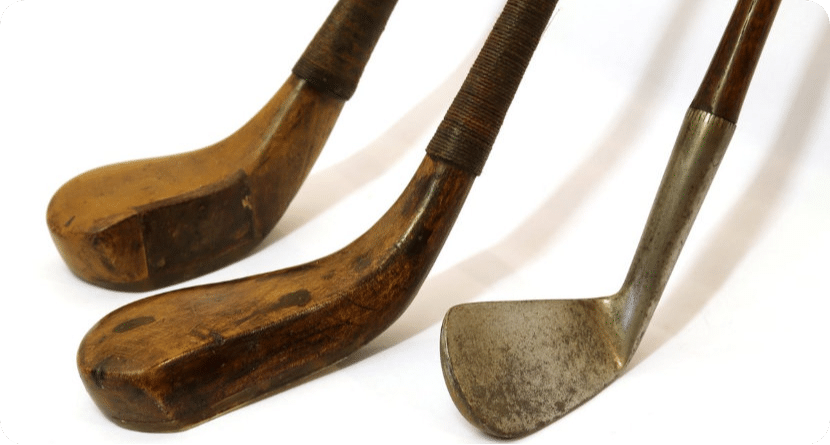
Although similar in appearance, the very first golf clubs were worlds apart from the high-tech sets we see today. The early iterations of clubs were crafted from an array of different types of woods, which included ash, purpleheart, and blue mahoe, and were first used to make the shafts as well as some clubheads. When factory iron forging was introduced in the early 1800s, it allowed iron clubheads to be mass-produced, which arguably signified one of the best advancements in golf club manufacturing.
It wasn’t until the mid-19th century that hickory was used as the preferred material to produce golf clubs, somewhat commercially. While these types of wooden shafts were considered to be stronger, they were still prone to breaking, and an alternative was inevitable. By the start of the 20th century, steel shafts were introduced and were legitimized by the R&A in 1929. Along with clubheads, this innovation could be considered as one of the most significant in the game’s evolution.
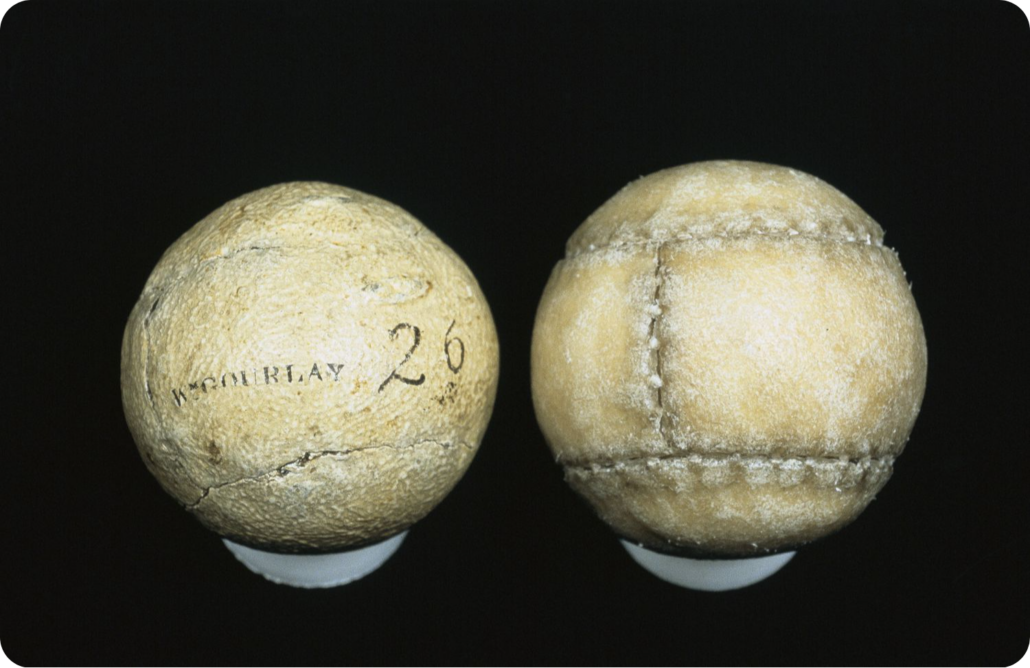
Just like golf clubs, the golf ball also underwent a significant transformation from the first iterations. It is said that the first balls were carved into spheres from wood to play similar stick and ball games, though the evidence can’t determine whether it was made for golf specifically. We do know, however, that the “Hairy” golf ball was made for the sport specifically. This ball was made out of a leather outer and stuffed with cow hair or straw and was used between the 1400s and 1600s, and paved the way for the innovation that followed.
In the early 1600s, the game saw the “Featherie” introduced. As the name suggests, the leather outer of this ball was filled with feathers from chickens or geese rather than cow hair or straw, and then painted with white paint. The use of these appendages made for a more compact stuffing within the ball, making it heavier, and thus it would fly further than its predecessor. Because they were handmade and time-consuming to produce, Featheries were quite expensive, even though they were inconsistent and susceptible to splitting. For these reasons, many players still opted for the Hairy instead as it was much more affordable.
Before golf cart GPS systems: Pre-modern And Modern Golf Balls
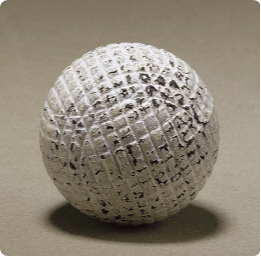
Around the same time, hickory started being swapped for steel in shafts and clubheads. Dr. Robert Adams Paterson invented a new way of making golf balls that would set in motion a string of events in golf ball manufacturing techniques that are still being used today. This ball was called the “Guttie” and was made from the dried sap of the Malaysian Sapodilla tree. This sap, once dried, had a rubber-like feel and could be molded into spheres easily when heated up, meaning they could be reshaped once damaged or out of round.
The Guttie was a lot cheaper to make and became the standard ball to use. Players, almost by accident, noticed that Gutties with chips and nicks in them, as a result of continuous use from golf clubs, flew further and had a more consistent ball flight than that of new, smooth balls. Ball makers then intentionally carved patterns in gutties to give them a textured surface. These indentations were known as “brambles” and can be considered the forefather of the dimple pattern we see in all modern golf balls.

The next major innovation came in 1898 when two workers from the BF Goodrich Company, Coburn Haskell and Bertram Work, wound rubber thread into a ball and noted an unprecedented amount of bounce from this new ball. Work’s suggestion that a thin cover should be placed around the ball gave birth to what was known as the rubber Haskell Ball. In the early 1900s, the addition of dimples to wound balls gave players a new level of aerodynamics, control in flight, and spin on greens. In the 1960s, synthetic resins like urethane and surlyn were introduced to the golf ball-making process. These resins made balls much more durable and longer-lasting, and ultimately, they were more value for money than any predecessors. The combined innovations of rubber cores, dimples, and resin materials in manufacturing golf balls are still the basis of how modern golf balls are made today.
Modern golf balls have become a science in their own right. The world’s biggest golf brands spend millions of dollars each year to aim and produce a faster, longer, and better-feel golf ball. From simple one-piece golf balls used on ranges to multilayered, five-piece engineering marvels designed to bring the best out of the top players on tour, and everything in between, it’s without question that the game would not be as popular today were it not for the humble beginning and tech innovations along the way.
Modern Golf Clubs
Golf Cart GPS Systems: The Digital Era
In the last two decades, digital innovation has reshaped countless sectors in myriad industries, and golf is no exception. At the core, the general manner of how the game is played has stayed the same over the last four centuries, but the way it is approached, thanks to digitization, has undergone a transformation that only a few of the founding fathers could have imagined. High-tech simulators changed how people practice, game tracking devices ensure stress-free game management, and golfing GPS systems have made navigation and on-course monitoring a breeze.
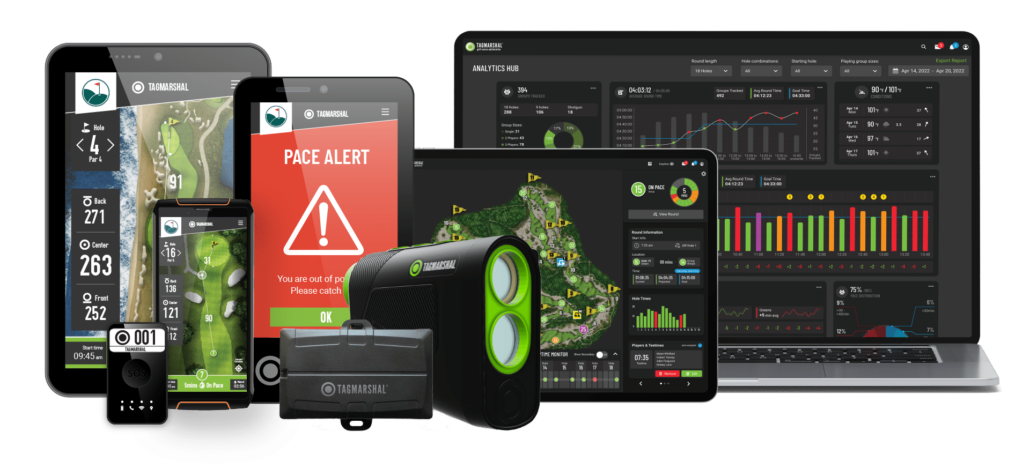
It’s almost incomprehensible to think that the Global Positioning System, or GPS, initially invented for military use, has made its way to the golf course and is a part of millions of players’ routines. Here, we will take a look at the many factors of the game that are influenced by golf cart GPS systems for casual golfers, professionals, and golf clubs alike.
Yardage Accuracy And Play Management
Golf cart GPS features have completely transformed how club selection and types of shots are made. By taking out the guesswork, GPS systems have eliminated the need for amateur players, in particular, to rely on course markers or yardage books to make choices on the course. This not only provides a better experience for the player in numerous ways, but it also helps speed up the pace of play when players don’t need to mull over what to do on the course.
Easy Scoring
Golf cart GPS systems provide players with easy, distraction-free methods of scoring. Golfers can use the integrated scoring system onboard to input their scores without the worry of a misplaced pencil or an app on their phones where notifications may loom, which may sidetrack them from their game. Easy scoring makes for smoother games.
Course Maintenance
From a golf course or club manager’s perspective, golf cart GPS systems have been pivotal in the way courses are maintained and upheld. With the integration of Tagmarshal’s state-of-the-art technology, golf cart GPS systems can be utilized for much more than simply scoring and accurate yardages. These features help reduce wear and tear overall by controlling foot traffic and giving you complete oversight.
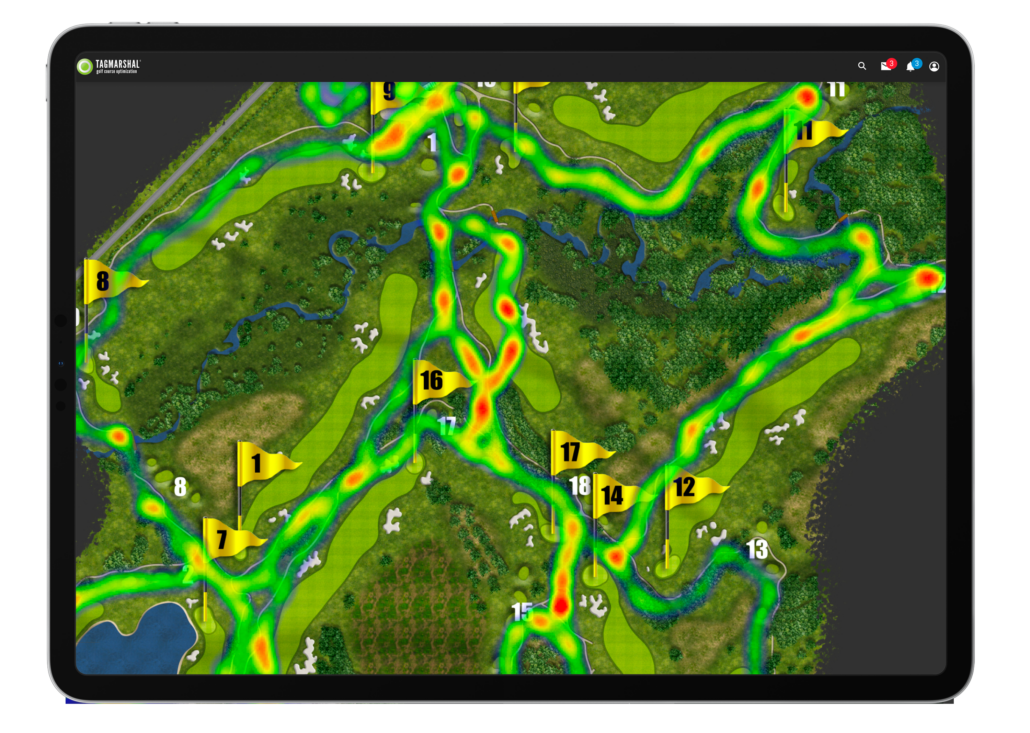
Pace Of Play
Golf cart GPS systems do wonders for regulating and improving pace of play. With systems like Tagmarshal, you get access to real-time course management data, which allows your staff members to quickly identify bottlenecks, monitor group positioning, and send pace of play reminders straight to players’ carts. When you have this level of oversight, you can prevent delays and keep groups moving, creating an overall better experience for all the golfers on the course.
Safety and Efficiency
The modern age also prioritizes safety and efficiency on the golf course, and golf cart GPS integration is a huge help. Systems such as Tagmarshal have geofencing features in place, acting as virtual boundaries that essentially restrict where the carts can go. A geofencing system helps to protect sensitive areas of the course while keeping players away from hazardous areas or sections undergoing maintenance. Geofencing can be used to automate maintenance schedules, reduce wear and tear on high-traffic zones, and improve the overall health of the course.
Player Insights
Data plays a huge role in improving golfers’ games. With golf cart GPS systems, important data is gathered during a round, and this data can be used to keep track of performance over time. Golfers can therefore quickly identify issues with their performance and tailor sessions accordingly. Giving players the tools to get better on the course will only boost your course’s reputation.
The Future of Golf Technology
Technology evolves at a rapid pace. The future of golf is more connected and intelligent than ever, and modern innovations are only going to increase. We are already starting to see glimpses of AI-driven swing analysis, augmented reality overlays, and even drone-assisted course management. As the next generation drives the sport forward, tech will continue to play a major role in making the game more accessible, enjoyable, and personalized to each player.

The balance between innovation and tradition is central to the sport’s identity. As the core principles of the game remain the same, the tools and systems being used are transforming the experience as a whole. We can clearly see how golf cart GPS systems have revolutionized the game, and we do not expect the evolution to slow down.
Final Thoughts
Golf is far more than just a game. It is the ultimate blend of skill, patience, and these days, technology. Reviewing the equipment of the past and the innovations of today highlights the transformative process that modern-day golf has undergone, integrating technology like golf cart GPS systems to improve the course and experience as a whole. The evolution of golf technology keeps pushing the boundaries of what’s possible on the course, and golf is better for it.
At Tagmarshal, we are the industry leader in effective golf course optimization, providing courses with full, real-time operational oversight and reporting. With our system, golf operators have the tools to improve the player experience through pace and flow of play, enhance efficiency via automation and generate additional revenue overall.
To learn more about Tagmarshal and how our system will improve your operation, reach out today or watch a demo!
 WATCH DEMO
WATCH DEMO